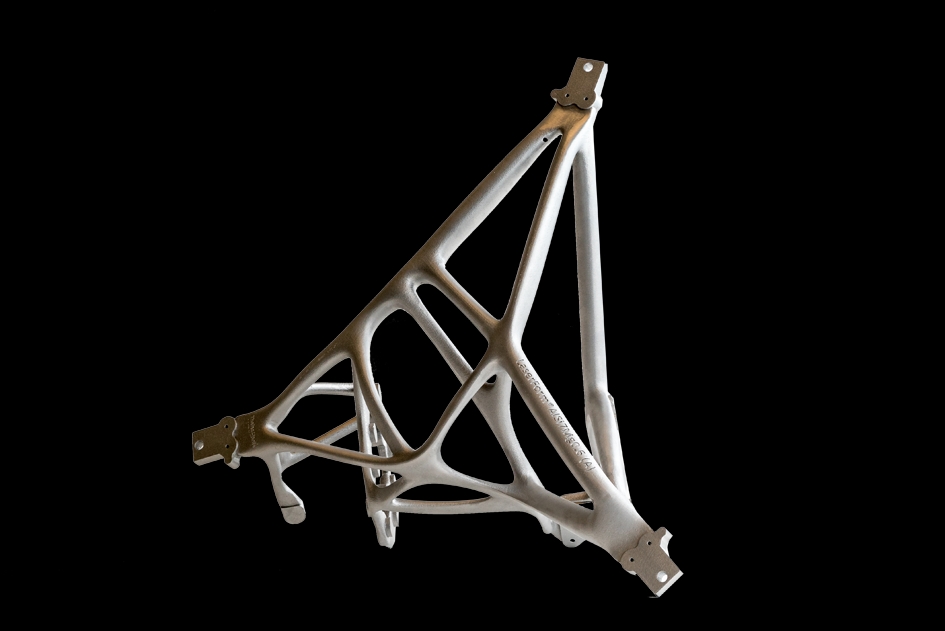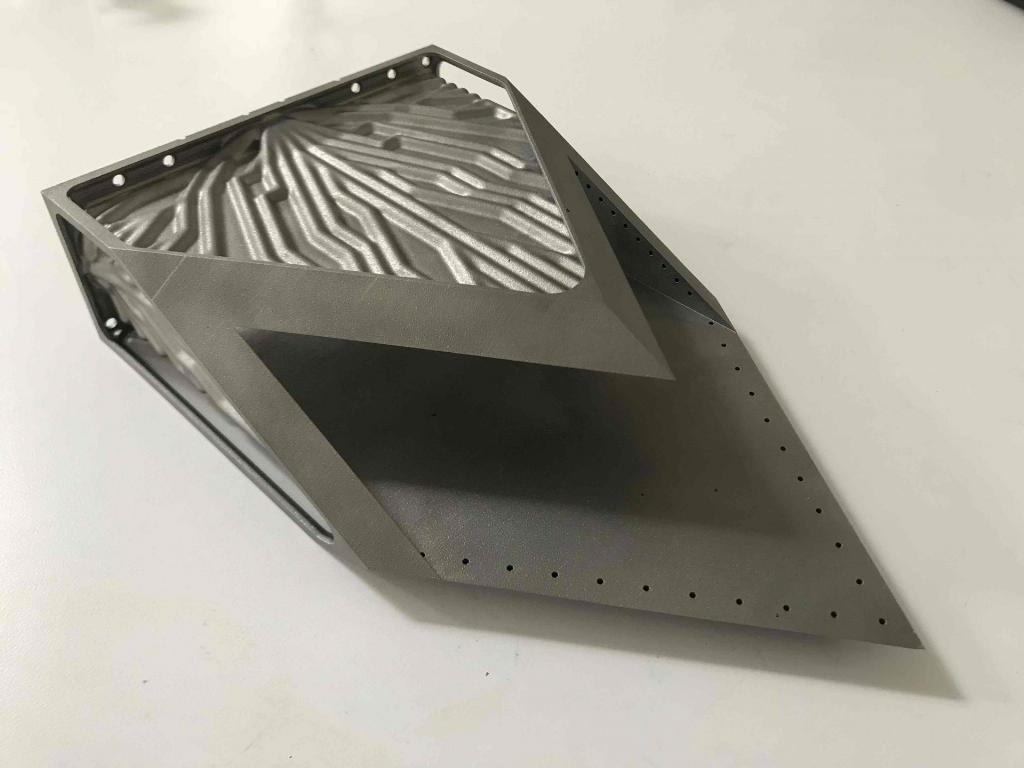Innovating for efficiency

3D Systems’ vice-president of advanced application development, Patrick Dunne looks at how the company is innovating for efficiency with additive manufacturing in the aerospace industry.
As green credentials increasingly gain importance for many businesses, manufacturers are looking for new ways to create products that deliver performance efficiencies. The aerospace industry is at the forefront, looking for opportunities to innovate with novel designs that ultimately help improve fuel efficiency. Additive manufacturing technologies are augmenting manufacturing workflows, transforming the way these innovations are produced.
Additive manufacturing (AM) is a revolutionary technology that is changing the way many companies are designing and producing products – with the aerospace industry being a leader. As a tool, AM enables designers and engineers to create parts that cannot be expressed with traditional formative and subtractive methods. It is sometimes said that with additive technologies, ‘complexity is free’ – allowing engineers to design for function – more commonly referred to as Design for Additive Manufacturing (DfAM). As a digital technology, AM also helps improve efficiency as traditional tooling is not required. This allows design teams to iterate at rapidly, achieving a superior product faster than would be possible with previous technologies.
In aerospace, this rapid, minimally constrained design environment allows for step changes in design optimisation. At a practical level this is now enabling aerospace companies to design better, faster and more efficient platforms. Below we explore some of the significant advantages the aerospace industry can gain as a result of embracing the combined DfAM/AM approach to manufacturing.
Innovation and consolidation
We begin with design simplification, component consolidation and part count reduction. Historically, complexity, cost, time-to-market as well as end system reliability hold a close correlation to the number of subcomponents within an assembly. The fewer parts you have, the less assembly required and ultimately, the fewer points of failure.
While a reduction in the number of parts as a design philosophy is not new, nor even exclusive to additive manufacturing, AM allows engineers to take it to a whole new level.

My favourite recent example was a direct metal component that was traditionally made from 12 separate castings and tubes, all welded into a single part. Aside from assembly labour, tools, jigs and fixtures – as well as a complex multi-vendor supply chain – it ultimately contained a QC step where nearly 10m of weld lines had to be meticulously CT inspected for defects. When AM was applied, 12 parts became one – and jigs and fixtures, assembly and slow QC inspection of weld lines were no longer required.
The resultant part was lighter, had fewer points of failure, was more cost-effective and efficient to source and produce, and yielded better performance.
Next up is thermal transfer. The fuel efficiency of jet engines is a function of multiple factors. One of these factors is system temperature. Typically, the hotter you can run the system, the more fuel-efficient it becomes. A 100-200°C increase in temperature can account for a 1-2 percent efficiency increase.
While that does not sound like much, it can equate to hundreds of millions of dollars in fuel savings for an airline when you look at thousands of engines flying many thousands of hours. Additive manufacturing allows engineers to integrate the design of exotic/conformal cooling structures into sub-components that ultimately allow the parts to maintain functional and structural integrity at these elevated temperatures.
Similar principals of thermal transfer exist within rocket combustion systems, where temperature drives pressure. This, in turn, yields performance, as well as the rate of wear and tear/ablation, feeding the trend towards system reuse economics.

And then there is weight reduction to consider. Additive manufacturing holds huge potential benefits for the efficiency of spacecraft and satellites. Reducing the weight of parts that fly always yields improved fuel efficiency and performance. However, nowhere is this improvement realised more than space systems.
Design-driven structural optimisation, both manual and automatic, yields step changes in strength-to-weight ratios. Recent examples include Thales brackets for satellite antenna. Utilising advanced structural algorithms, Thales was able to generate a bracket design that, when expressed in Direct Titanium printing, was 25% lighter – while maintaining the performance of a traditionally manufactured bracket. Further opportunities for optimisation were identified based on transitioning to tubular structures, as we see in bicycle frames.
Finally, additive manufacturing - the efficiency breakthrough. When you combine thermal transfer, component consolidation, and weight reduction, you can see how additive manufacturing has a large part to play in improving energy usage figures for the aerospace market. There are other benefits too such as more cost-effective R&D, reduced time to first part, and the ability to create bespoke parts, furthering innovation.
As adoption of AM in the aerospace industry continues to accelerate, so too will the number of manufacturers 3D printing plastic and metal end-use parts. AM is transforming how industry-leaders are creating new, improved products while gaining efficiencies that place them well ahead of their competitors.











